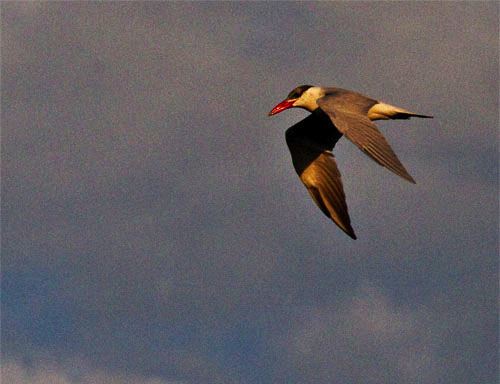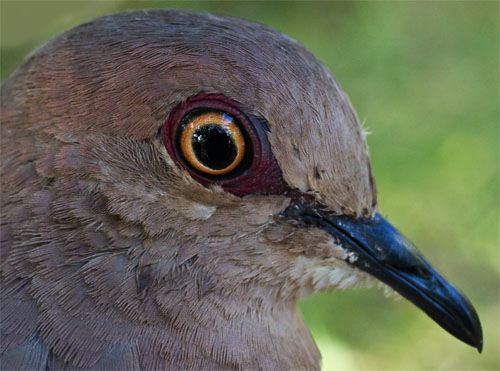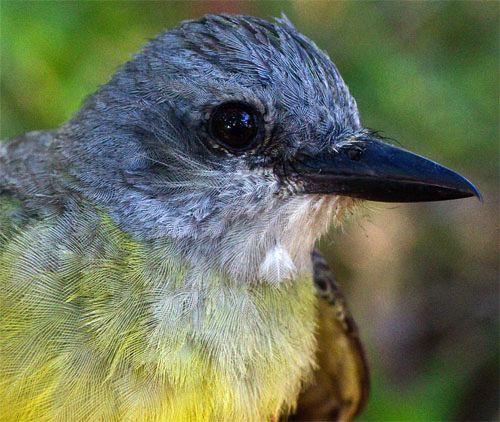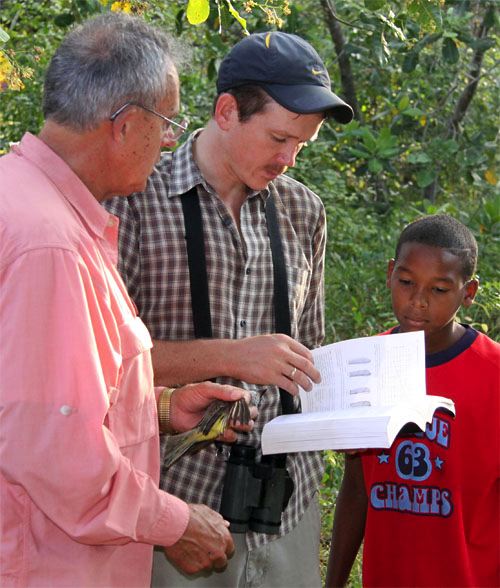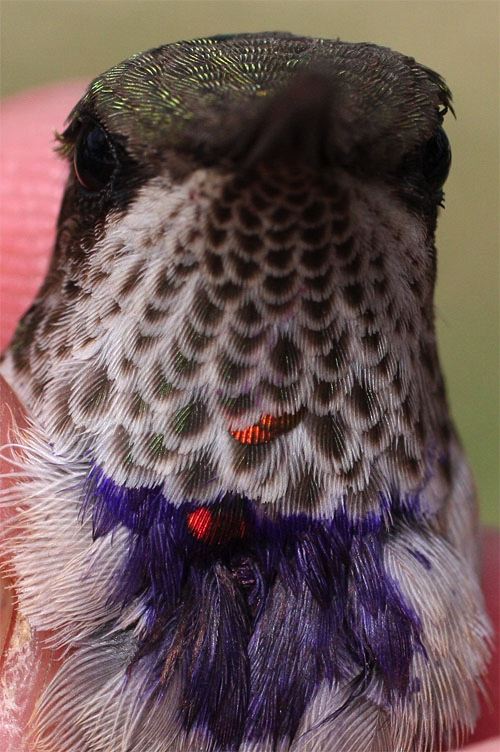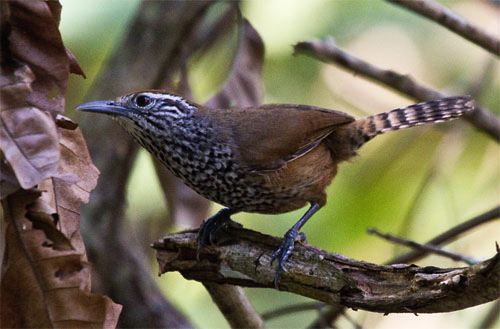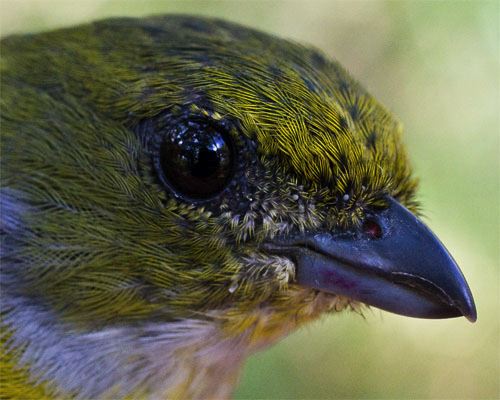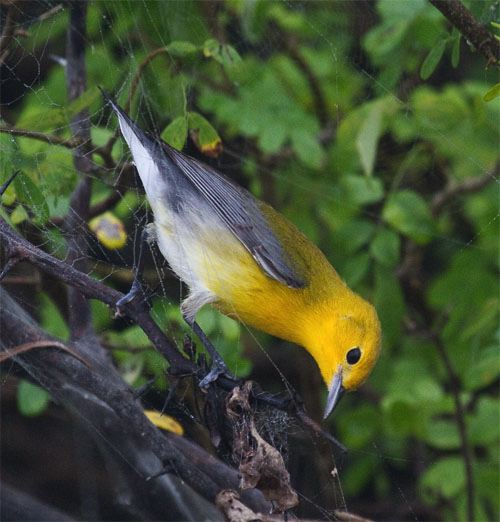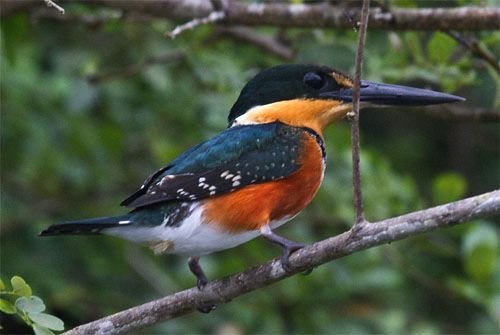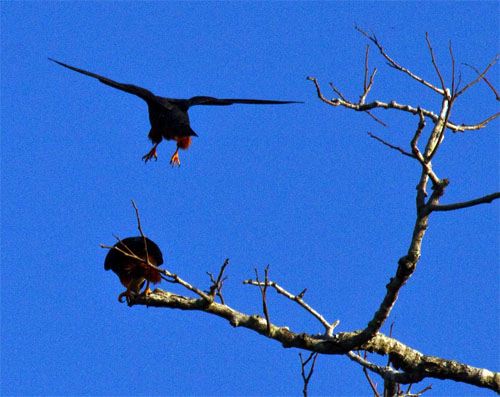|
|
|||
|
THIS WEEK at HILTON POND
1-12 March 2011 INSTALLMENT #505---Visitor # (Back to Preceding Week; on to Next Week) |
|
ROUND 3 OF THE • PREFACE • Our first two 2011 Operation RubyThroat hummingbird expeditions to Central America were productive, but we also encountered unexpected difficulties. In Costa Rica the 600-acre aloe field where we've researched Ruby-throated Hummingbirds (RTHU) since 2004 had been converted almost overnight into a grass-covered cattle ranch, our iPhone 4 was stolen, and our digital projector was irreparably damaged by baggage handlers. Then in Guatemala an especially early dry season meant aloe fields we expected would concentrate ruby-throats for banding had already flowered; this necessitated a last-minute move across the country to a new study site that turned out to have 'way too few RTHU--plus our bus tire was spiked by bandidos and then our hard-to-get custom-made banding tools were confiscated by airport security just before our flight out of Guatemala City. Fortunately, our dependable and hard-working citizen science groups sloughed off these and other inconveniences detailed in our two most recent trip reports. Despite it all, in Costa Rica "Th'Levens" were able to capture 105 Ruby-throated Hummingbirds, and even though Guatemala yielded only four banded RTHU the "GuateNeers" learned much about other resident hummers that compete with ruby-throats for floral resources on our target species' wintering grounds.
All text, maps & photos © Hilton Pond Center With all this in mind, we looked forward to traveling on to idyllic Belize (above), our third and final destination for the current Operation RubyThroat mid-winter hummingbird banding season. We also hoped our so-called "2011 Jinx" would be broken when we got to the Crooked Tree study site so our new group would have a less frustrating experience. Yes, that was our hope, but please read on to find out just what happened this year in Belize.
All text, maps & photos © Hilton Pond Center • ADVANCE TEAM ARRIVAL • On the morning of 28 February most of the GuateNeers--our stalwart citizen science volunteers who helped us capture and band Ruby-throated Hummingbirds this year in Guatemala--were departing Guatemala City's airports for flights back to the U.S. Two of them--Pat Barker and Brenda Piper--had arranged an extension to Tikal and would be meeting the advance team (trip leader Bill Hilton Jr. and expert guide Ernesto Carman Jr.) in a few days at Crooked Tree Sanctuary in Belize, the last stop for our 2011 Operation RubyThroat expeditions. The advance team flew on to Belize City, where they were greeted by Leonard Gillett, head guide at Bird's Eye View Lodge where the group again would be staying. We had become good friends with Leonard on last year's Belize trip and looked forward to a great time at Crooked Tree locales where we had banded 54 ruby-throats in 2010. (The map above shows the location of the Lodge--right on the big lagoon that is so attractive to wading birds and waterfowl when water levels drop during the dry season.) Aside from the previously described confiscation of our banding tools from a carry-on backpack by the security agent at Guatemala's airport, the two-leg flight from Guatemala City to San Salvador to Belize City was uneventful. After Leonard met our plane we made our traditional tour of local hardware stores, this time to find some makeshift banding equipment. (Things were not actually as bad as they could be. We had brought an extra set of hummingbird banding tools that were secure in our checked baggage, but the four pliers that had been confiscated from the carry-on were for bigger Neotropical migrant birds we also band if they hit our nets. Makeshift tools would still allow us to band birds like warblers and orioles and catbirds that might be encountered back north on U.S. or Canadian breeding grounds.) Fortunately we found a snap-ring tool that would serve to open bands and also picked up a pair of needle-nose pliers we hoped would do a passable job closing bands safely around non-hummers' legs.
All text & photos © Hilton Pond Center During the ride from Belize City Leonard helped us catch up on news from Crooked Tree and told us not much had changed since last year . . . except that he had a new daughter, water levels in the lagoon were still quite high, and Cashew trees (above) whose nectar is so attractive to early migrant Ruby-throated Hummingbirds were just now in full bloom--about two weeks later than normal. We weren't sure what the delayed bloom would mean with regard to RTHU we often caught in traps last year. Would ruby-throats be so intent on drinking from cashew flowers they would miss our mist nets and/or fail to enter traps baited with sugar water? Only time would tell.
All text & photos © Hilton Pond Center The advance team had a couple of days alone at Bird's Eye View Lodge, so first thing after breakfast on 1 March we borrowed a van and drove toward the small woodlot where last year we had been fairly successful at mist netting Ruby-throated Hummingbirds. The site--across the dirt road from an emergency shelter that houses Crooked Tree residents during hurricanes--had a numerous tall trees with Cashews in the understory, plus luxurious shrubs and herbaceous plants that brought in the birds and helped camouflage our mist nets (above). In 2010 the site yielded 20 ruby-throats we banded, plus a wide diversity of Neotropical migrants and resident species from American Redstarts to Rufous-browed Peppershrikes. It would be an understatement to say the advance team was dumbstruck when we got to last year's study site and found that--except for the Cashews and a couple of tall trees--it essentially had been cleared of vegetation!
All text & photos © Hilton Pond Center In place of the lush green thickets that had sheltered birds last year were dead brush and, in some spots, ash and charcoal where piles of cuttings had been burned. As we walked through this relatively desolate landscape, we mourned the demise of yet another study locale, just as we had when confronted with the loss of once-productive Aloe Vera fields back in Costa Rica and the non-blooming aloe finca in Guatemala. Due to human intervention and the vagaries of dry season timing, the "2011 Jinx" that started in Guanacaste had pursued us all the way to Belize and this loss of study sites was really getting old! Leonard told us the woodlot had been cut a few months previously by some unknown party, a strange turn of events because the property belongs to a widespread family of absentee landowners. His only guess was someone who realized the owners lived elsewhere planned to sneak in and harvest the lot's Cashews as they ripen this spring; clearing undergrowth would make that task much easier and might even improve the yield. Although we could have continued working at the now-decimated site this year, a walk-through of the property revealed few birds. Furthermore, vegetation that would make our mist nets less visible and shade our volunteers from tropical sun was nearly absent, and all those scattered piles of dead brush would make it difficult to erect nets.
All text & photos © Hilton Pond Center Leonard anticipated our despair over this latest turn of events and already had planned to show us an alternative site he drove us to later in the day. It was a nicely maintained 15-acre Cashew farm that belonged to Jerry Jex; although we did see Ruby-throated Hummingbirds there, it was essentially a big shade-less field dotted with Cashew trees--a habitat type (above) we had tried the previous year with minimal success. It was also nearly half an hour from the Lodge--a real inconvenience when our desire is to get out as early as possible in the morning to do field work. After the Jex finca tour Leonard had to depart for other tasks, so the advance team again borrowed the van to further explore the local community for a new study site.
All text & photos © Hilton Pond Center We drove up and down nearly every dirt road in the 16,000-acre Crooked Tree Sanctuary--from areas along the lagoon to a distant pine savannah--and finally found another relatively dense woodlot similar to the one we had lost: A mix of high and low vegetation, including nectar-bearing Cashew trees that were attracting Ruby-throated Hummingbirds to their blossoms (above). Once again this property belonged to absentee landowners, so it took a couple of days to gain permission that, once granted, allowed the advance team to breathe a little easier while waiting for our next group of citizen scientists to arrive from up north. The bad news was that our new study site included a well-weathered "For Sale" sign that meant this time next year we might be looking for yet another spot at Crooked Tree in which to study ruby-throats. Maybe the moral of this story is we shouldn't do our Neotropical hummingbird field studies on private property; alas, that's where the ruby-throats seem to be.
All text & photos © Hilton Pond Center In preparation for the arrival of our North American volunteers the advance team also put up several traps around Bird's Eye View Lodge. We were pleased to learn Lodge owner Denver Tillett had been maintaining a half-dozen hummingbird feeders we had given him in 2010 and that sugar water was attracting at least three species of hummers. We hung our traps from the feeder hooks and temporarily moved feeders to the trap undersides; on days when trapping would occur we'd simply move the feeders up into the traps and await our quarry. Until then, hummingbirds could feed freely and local Vermilion Flycatcher males could commandeer our traps as territorial perches (above).
All text & photos © Hilton Pond Center • DAY ONE • The advance team spent the remainder of 1-2 March resting up, exploring Crooked Tree Sanctuary, and getting ready for the arrival of the new crew on 3 March. On the 3rd we went to the airport in Belize City to watch the flights come in and were disappointed when one of our nine participants was held up by bad weather back in the U.S. Nonetheless, we were happy to see the other eight, some of whom were old friends from previous Operation RubyThroat Neotropical trips. The group included first arrivals Glenn & Juli Dulmage of Chestertown MD (above, splendidly attired in their T-shirts from Costa Rica 2008), then Edd Frazier (Lexington KY) and his son-in-law Norm Hommen (Gainesville FL), Ronda Moore (S. Burlington VT), Rosalie Phillips (Durango CO), and also Pat Barker (Charleston WV) and Brenda Piper (Middleton MA), both of whom had gone with us to Costa Rica in 2010 and had just completed our 2011 Guatemala expedition. Missing was Carol Foil (Baton Rouge LA, Costa Rica 2008), who arrived a day late after that weather delay. As is our custom, we christened this new group with a unique nickname--the "BeLevens"--indicating they were the 2011 Operation RubyThroat team in Belize. After loading baggage into the bus we departed Belize City's airport for the hour-long ride to Crooked Tree, where the group was met by the ever-friendly staff of Bird's Eye View Lodge, our home for the next eight nights. Following check-in, a walk-around the Lodge property, and an outstanding creole-style supper, we had an orientation meeting and went off to bed to dream of catching Ruby-throated Hummingbirds among the Cashews.
All text & photos © Hilton Pond Center • DAY TWO • The Bird's Eye View kitchen staff (including our beloved Natalie, above right) was kind enough to prepare breakfast earlier than usual, so Ernesto--our human alarm clock--knocked on doors at 5:20 a.m. Eager to get into the field, everyone finished eating in time to load the van with net poles, rebars, banding equipment, and personal gear for a 6 a.m. departure via the Lodge's 15-passenger van that again served us well in 2011. Ernesto was designated driver for our morning trips to and from the banding site, which allowed a great deal of flexibility for which we were grateful.
All text & photos © Hilton Pond Center Upon arrival at the study site we demonstrated how to put mist nets on the poles and mount them on rebars so the nearly invisible 42-foot-long nets hung with just the right tension to harmlessly capture birds that flew into them. Four Operation RubyThroat veterans in the mix that first day in the field--including Juli Dulmage and Brenda Piper (above)--helped set-up go quickly. It was only a matter of minutes before the BeLevens made their first capture--a female Ruby-throated Hummingbird netted at 7:20 a.m. We were off to good start in Belize, despite having to work at this new study site.
All text & photos © Hilton Pond Center The ruby-throat was followed within ten minutes by a male Hooded Warbler and then throughout the morning by a White-eyed Vireo, a female Magnolia Warbler, a male American Redstart, a Northern Waterthrush (above), a Yellow-breasted Chat, two male Common Yellowthroats, three Wood Thrushes, and four Gray Catbirds. That was truly a potful of birds that kept Ernesto busy as our bird extractor and kept things hopping at the banding table. All these birds--like our Ruby-throated Hummingbird target species--were Neotropical migrants that had potential for showing up on their North American breeding grounds, so we were permitted by the U.S. Bird Banding Laboratory to place numbered aluminum bands on their legs.
All text & photos © Hilton Pond Center We also netted several local non-migratory species we could admire and photograph before releasing them unbanded. One was a tiny songbird scarcely bigger than a hummingbird: Common Tody-Flycatcher (above), a black-and-yellow Belizean resident that often hovers as it gleans insects from vegetation. This long-billed tyrant flycatcher weighs only twice as much as a Ruby-throated Hummingbird (6.5g vs. 3.2g) and breeds from southern Mexico to southern Brazil. The Common Tody-Flycatcher typically frequents gardens and forest clearings, where sexually monomorphic pairs form long-term bonds and hang together year-round.
All text & photos © Hilton Pond Center After handling the diminutive Common Tody-Flycatcher, grasping a freshly caught Squirrel Cuckoo (above) was entirely different. This bird was so large we couldn't hold it and take a photo at the same time, our arms not being long enough to extend the bird far enough away to get it all in the viewfinder. Indeed, Squirrel Cuckoos are about 20" long, more than half of which is tail. Like their northern relatives--e.g., Yellow-billed Cuckoos that occur in summer at Hilton Pond Center--they are among the few kinds of birds that regularly seek out and eat bristly caterpillars. Squirrel Cuckoos are less shy than most of their kin, so their visibility and rich brown plumage make them a popular, easily recognizable species even for non-birders.
All text & photos © Hilton Pond Center The next hummingbird we captured at Crooked Tree was a White-bellied Emerald (above)--aptly named for its metallic green back and snowy white undersides. This species superficially resembles a female Ruby-throated Hummingbird, but the iridescent green moustache and red lower mandible are diagnostic. Males and females are alike in White-bellied Emeralds, Amazilia brevirostris, which are not related to the more commonly encountered and sexually dimorphic Canivet's (formerly Fork-tailed) Emerald, Chlorostilbon canivetii, that we also saw in Belize.
All text & photos © Hilton Pond Center After our successful morning in the field we returned to Bird's Eye View Lodge for lunch and to open the portable traps for more hummingbird banding. Rufous-tailed Hummingbirds were first to get caught (above), and we spent that day and the rest of the week removing this trap-happy resident species--over and over and over again--while we tried to capture the hummers we were really after. We did indeed manage to trap some Ruby-throated Hummingbirds at the Lodge on our first day of trying--two females, two second-year males with incomplete gorgets, and one adult male with a completely red throat. Counting the female at the field site, that gave us a total of six RTHU banded on 4 March, so things looked pretty promising for our stay in Belize--especially when our team was complete as Carol Foil finally arrived following her weather-based travel delays. • DAY THREE • Now that all the BeLevens had experience in setting up mist nets, we got off to a fast start on 5 March. Despite our best efforts, however, six hours in the field yielded NO new Ruby-throated Hummingbirds.
All text & photos © Hilton Pond Center We did manage to capture more Neotropical migrants, so at least there was activity at the banding table. The day's catch included a female Magnolia Warbler, a male Common Yellowthroat, a female Hooded Warbler, a female American Redstart, a female Black-and-white Warbler, a female Summer Tanager, two female Yellow Warblers, two Northern Waterthrushes, two Wood Thrushes (above), and six Gray Catbirds. We learned from several local guides that Wood Thrushes have been nearly absent from Crooked Tree for many years but that they were appearing in record numbers in 2011.
All text & photos © Hilton Pond Center And speaking of catbirds, while we were at the banding table on 5 March we heard a familiar voice in the woods when someone cried out "Mistah Bill, Mistah Bill, do you remember me?" It was Kadijah (above), a striking young girl from Crooked Tree who had wandered onto our study site in 2010 and became enamored of the bird banding operation. Kadijah remembered us and we certainly remembered her and the fascination she had last year when we let her hold and release a Gray Catbird. This year she was as bubbly and curious as ever--as was her sister Cidella who joined us a little while later. As always, we try to involve local folks in our banding work so they understand what we're doing and to give them more appreciation for "their" birds we gringos come so far to study. It's quite fulfilling when these young people are so appreciative of our taking time to work with them.
All text & photos © Hilton Pond Center In addition to the Neotropical migrants we banded on 5 March we also caught several resident species. One was the strikingly colored and accurately named Spot-breasted Wren (above), one of ten kinds of wrens that occur in Belize. This individual was an adult; immatures have plain breasts and resemble Carolina Wrens. The Spot-breasted Wren occurs from southern Mexico to northern Costa Rica, particularly in secondary forest and cut-over areas. Back at Bird's Eye View Lodge we again ran our hummingbird traps on 5 May and caught two male Ruby-throated Hummingbirds, one immature and one adult. (On a personal note, the trip leader was most pleased on this date that wife Susan Hilton was able to get some comp time from her school district and fly down from South Carolina to join him and the group for the rest of the Belize expedition.)
All text & photos © Hilton Pond Center • DAY FOUR • On 6 March we again got off to an early start and were excited to catch our first Ruby-throated Hummingbird at 6:57 a.m. Unfortunately that one bird was the only RTHU banded that day. The mist nets still produced a bunch of Neotropical migrants, including a male Northern Parula, a Northern Waterthrush, a male Indigo Bunting, a Wood Thrush, two female American Redstarts (above), two Common Yellowthroats, two White-eyed Vireos, three Magnolia Warblers, and three more Gray Catbirds.
All text & photos © Hilton Pond Center We also netted a bird (above) whose spotted face and rusty crown were reminiscent of the Spot-breasted Wren from the day before, but a close look at the bill revealed a tiny hook near the tip--which ruled out wrens. Instead it was a female Barred Antshrike, a member of the Antbird Family (Thamnophilidae). The male of this species looks very different from the female, with black and white barring over his entire body, wings, and tail. Pairs maintain long-term bonds in forested habitats. Typically a female lays two eggs and the mates share incubation; after young leave the nest the female parent cares exclusively for one fledgling and the male parent the other.
All text & photos © Hilton Pond Center One other local resident species we caught on 6 March reminded us of a Northern Cardinal without a crest; instead, it was a male Red-throated Ant-Tanager (above), not to be confused with the quite similar Red-crowned Ant-Tanager. This is another of those Neotropical birds that befuddles taxonomists. Some place it in the Thraupidae (Tanager Family) while others call it a cardinal (Cardinalidae). The species eats insects, spiders, custard apples, and wild figs. Female Red-crowned Ant-Tanagers are colored rather like female Northern Cardinals we see daily at Hilton Pond Center.
All text & photos © Hilton Pond Center Following the morning field work and lunch at the Lodge, the group boarded a van and with Jerry Jex behind the wheel drove toward Altun Ha, an abandoned Mayan city about 90 minutes away. There we were met by Ann-Marie Avona, a very knowledgeable Creole tour guide who oriented us to the site. This extensive settlement covers nearly five square miles ("small" by Mayan standards) and was first inhabited about 200 BC. The central-most portion of the city includes as many as 500 structures, the largest of which are temple/tomb pyramids built in traditional Mayan stair-step style (above and below). For more information about Altun Ha, please see our account of last year's expedition at Belize-Oneers At Crooked Tree.
All text & photos © Hilton Pond Center • DAY FIVE • When possible, we like for the middle of our nine-day excursion to be a "Hump Day" when participants can trade field work for a more leisurely opportunity to watch birds, explore, take photos, or just plain relax. This year at Crooked Tree our Hump Day just happened to coincide with the official celebration of Baron Bliss Day--a national holiday in Belize that actually occurs on 9 March. (As in the U.S., some Belizean holidays are shifted to Mondays or Fridays to create long weekends.)
All text & photos © Hilton Pond Center Also on that day the BeLevens all took advantage of one of the finest amenities of Bird's Eye View Lodge: A sunrise boat ride on the lagoon. Everyone was up for an early snack and quickly boarded a 12-passenger vessel like the one above. Our pilot was Michael, a keen-eyed local guide who--with Ernesto--was able to spot and identify birds from amazing distances. The "bad" news was the dawn was exceedingly foggy, but that meant the "good" news would be the morning cruise would be cooler and we might even have a better chance of sneaking up on birds in the boat--even if the fog might interfere with taking sharp photos of whatever we might encounter.
All text & photos © Hilton Pond Center As we pulled away from the dock one of the first birds we saw in the still semi-dark lagoon was one with long legs, long neck, and long bill (above). Although many wading birds we encountered shared these characteristics, the bird's speckled body and neck and bicolored, dark-tipped bill left no doubt it was a Limpkin--undoubtedly in search of Apple Snails that thrive in the freshwater lagoon. Limpkins are interesting birds, especially to taxonomists who claim they comprise the only genus in their family, the Aramidae. DNA studies suggest the Limpkin is indeed monotypic; its closest relatives are the cranes, rather than the rails it superficially resembles. Limpkins stand about two feet tall and have 40-inch wingspans; some individuals have bills that curve slightly to the right and follow the spiral shape of an Apple Snail's shell.
All text & photos © Hilton Pond Center The only bird with which a Limpkin is likely to be confused is an immature American White Ibis, so we were fortunate that one of the next birds in view was just that species (above). Despite its overall dark appearance there was no body speckling, and the bill of the ibis was pink and noticeably decurved. White Ibises have a much more restricted range than do Limpkins, with the former occurring almost exclusively in coastal areas of the southeastern U.S., Mexico and Central America, and the Caribbean. Immature White Ibises do tend to wander, however, and we've had a few through the years at Hilton Pond Center--180 miles inland from the South Carolina coast.
All text & photos © Hilton Pond Center As we plied the placid waters we came across many kinds of wading birds, from Boat-billed Herons to Roseate Spoonbills. The most elusive--and one of the most colorful--was an Agami Heron (above) we encountered after turning upstream into one of the creeks that feeds the lagoon. This species is uncommon and local and notoriously hard to see and photograph because it tends to lurk in shady backwaters beneath overhanging vegetation--exactly the spot where the photo above was taken. The Agami Heron--sometimes called "Chestnut-bellied Heron"--appears to be making a comeback in its range (Central America and northern South America), where it was considered to be a threatened species less than 30 years ago.
All text & photos © Hilton Pond Center During the three-hour boat cruise we saw tons of birds and a few other creatures, including several rather shy Morelet's Crocodiles, Crocodylus moreletii (above). This endangered species occurs in Mexico, Guatemala, and Belize, primarily in forested freshwater habitats. Also known as "Mexican Crocodile," it can reach lengths of about ten feet. Our typical sighting of this crocodilian came when one stuck its nostrils and eyes barely above the water's surface. After scoping out our boat with its cat-like eyes--vertical pupil slits--the croc would silently submerge, perhaps to hunt for fish that make up the bulk of its prey. Morelet's Crocodiles also eat birds, small mammals, and reptiles--including other Morelet's.
All text & photos © Hilton Pond Center For many expedition participants, the highlight of our early morning boat trip was an encounter with one of the rarest birds on the lagoon: The giant Jabiru stork. Even in long-distance view (above) Jabirus really look big--up to five feet tall, bill 12" long, weight 18 pounds, wingspan nearly ten feet--but the best way to get a feel for their size is to compare them with other birds such as the Great Egret, Snowy Egrets, and Tropical Cormorants in the photo above. Last year when water levels were much lower we could sit at the Lodge and count as many as 50 Jabirus at once in the lagoon, but this year they were still dispersed and working the shallows up the surrounding creeks. Even though 7 March was "Hump Day," after the sunrise boat ride we couldn't resist deploying hummer traps at the Lodge. In a two-hour span we caught and banded one female Ruby-throated Hummingbird, bringing our total to date in Belize to ten.
All text & photos © Hilton Pond Center • DAY SIX • On the morning of 8 March things started pretty well, with two female Ruby-throated Hummingbirds banded by 7:20 a.m., followed by an immature male at 9:27 a.m. The latter bird was especially important because he was snared while the Bird Club from the local elementary school was on site (above).
All text & photos © Hilton Pond Center Belize Audubon Society, which has jurisdiction over the riparian areas of Crooked Tree Sanctuary, shares our keen interest in conservation education for young people. Staff members believe the best way to conserve Belizean birds and habitats is to teach residents from a very young age that local avifauna have intrinsic value and should be protected. On the practical side, they also understand that having a diverse assortment of wildlife is a sure way to bring ecotourists to Crooked Tree, and ecotourism is a significant aspect of the local economy. Audubon staffers also want to show young people that it is possible to find employment in fields related to the environment--particularly as knowledgeable nature guides. For all these reasons we were more than happy to host a group of about 20 students who walked over from their school to join the BeLevens for about 90 minutes of instruction. These young folks already showed impressive knowledge of local natural history but were eager to learn more as we showed them several migrant and resident birds and banded a ruby-throat. The youngsters just beamed when they got to hold and release a newly banded bird, and so did we.
All text & photos © Hilton Pond Center We caught a couple of oddly named birds on 8 March, the first being a female Gray-collared Becard (above). This big-headed, big-billed species has been bounced around taxonomically; once thought to be a tyrant flycatcher, DNA work seems to indicate it is in a different family, the Tityridae. Note again the lightly hooked bill, a fine tool for capturing and dispatching all sorts of insect prey and even small vertebrates.
All text & photos © Hilton Pond Center Our other oddly named bird was a Plain Xenops (above), a smallish 5-inch-long songbird with an unusual flattened and upturned bill. This species is in the Ovenbird Family (Furnariidae)--not to be confused with the North American Ovenbird, which is a Wood Warbler (Parulidae). The Plain Xenops is a secretive bark-clinger that uses its bill to break up rotten timber as it forages for grubs of wood-boring beetles.
All text & photos © Hilton Pond Center Another netted species was a jet-black and well-named male Thick-billed Seed-Finch (above). This species has a huge conical bill that can crack open all sorts of seeds, although it also dines on insects--especially during the breeding season. One might logically suspect this shrub- and grassland-dwelling bird is an emberizid like the conical-billed buntings and sparrows, but DNA studies have given cause to move it elsewhere; it's now in the Tanager Family (Thraupidae). Neotropical migrants banded on 8 March included one male each for Yellow Warbler, Magnolia Warbler, and Black-and-white Warbler, a female American Redstart, a Yellow-breasted Chat, and four more Gray Catbirds. We also trapped an immature ruby-throat that afternoon at the Lodge, giving us four for the day.
All text & photos © Hilton Pond Center • DAY SEVEN • Neotropical migrants banded on 9 March included two White-eyed Vireos, a male Magnolia Warbler, a female American Redstart, a female American Restart, a male Magnolia Warbler, a male Common Yellowthroat, a Northern Waterthrush, three female Indigo Buntings (above), a Yellow-breasted Chat, four more Gray Catbirds, and our first Tennessee Warbler of 2011. Despite our best efforts, we caught no Ruby-throated Hummingbirds either at the field site or back at the Lodge.
All text & photos © Hilton Pond Center • DAY EIGHT • Neotropical migrants banded on 10 March included a female Magnolia Warbler, a male Yellow Warbler, a male American Redstart, a female Painted Bunting (above), a Yellow-breasted Chat, and a Summer Tanager. The day's one Ruby-throated Hummingbird capture--an immature male--came at 7:30 a.m. among the Cashews, bringing the BeLevens' running total to 15.
All text & photos © Hilton Pond Center We also netted a female Green-breasted Mango (above), one of the five hummingbird species we managed to capture during our time in Belize. Green-breasted Mangos are a handful--almost twice the size of a Ruby-throated Hummingbird--but some are rather docile. The male is dark iridescent green with a blue-black spot on the breast, while females have long white stripes to either side of the central dark streak. (Young birds of either sex have additional rusty stripes beside the white ones.) This curve-billed hummer is widely distributed from southern Mexico throughout Central America, with disjunct populations in scattered areas of South America; there are also records from Texas and North Carolina. Perhaps the WORST thing that occurred on 10 March was when a small herd of cattle wandered across the study site--not once, but twice. We managed to shoo them away from our nets the first time through, but on their second visit a young bull panicked and stampeded down a net lane. His horns and body completely wiped out one mist net and ripped the bottom two shelves from another--not a pleasant thing to witness when we know replacement nets will cost about $130 each. Was this bovine rampage simply a continuation of the "2011 Jinx?"
All text & photos © Hilton Pond Center The cattle encounter came at late morning, so to protect our nets from further demolition the team closed down the banding operation for the last time and returned to the Lodge for lunch. That afternoon we took our second "off-grounds" field trip, this time an hour or so southward to the Belize Zoo--touted as the "Best Little Zoo in the World." On the way, however, we saw our first big wild mammal--a Yucatan Black Howler Monkey (above) that local folks call a "Baboon." Driver Jerry Jex said this sighting was of particular interest because it was the first time he had ever seen a Baboon on the causeway road that leads from the mainland to Crooked Tree--even though there are substantial colonies of this native monkey several miles away.
All text & photos © Hilton Pond Center About halfway between Crooked Tree and the zoo Jerry turned off the main highway onto a dirt road not far from a small river. There in a savannah-like setting was something of great interest in a mature tree about a hundred yards from the road: A large pile of sticks on a horizontal limb. This massive structure was the nest of a pair of those giant Jabiru storks we had seen on the sunrise boat ride on Hump Day. A Jabiru pair had been using this same nest for several years--we got to see it on last year's expedition--but for the first time we were able to observe two nestlings being tended by an adult. The photo stretched our 100-400mm zoom lens with 1.4x extender to their limits, but it was nice to be able to capture any image of the distant chicks.
All text & photos © Hilton Pond Center We eventually arrived at the Belize Zoo, which exhibits only native Belizean animals in natural enclosures. The facility was established as a home for orphaned animals and to educate Belizeans about the importance of conserving locals habitats and organisms. One of our favorite exhibits included a spiny old male Ctenosaur--AKA Black Iguana--who seemed content to simply lie in the sun. Ctenosaurs, which come from ancient lineage, are omnivorous and eat pretty much whatever they come across, be it small mammals and lizards or vegetable matter such as fruit, flowers, and leaves.
All text & photos © Hilton Pond Center We were also fascinated by a troop of Yucatan Spider Monkeys (above) that spent most of their time in the canopy and--like the Ctenosaur--soaking up solar radiation, even though temperatures were in the 90s. These skinny, long-armed and long-legged primates were as agile an animal as we have seen, never missing a grip as they moved from limb to trunk and tree to tree. Each monkey's "fifth hand" was its prehensile tail, an anatomical structure found only in New World primates.
All text & photos © Hilton Pond Center • DAY NINE • The BeLevens slept in a little on 11 March but were up in plenty of time for breakfast. It was happy-sad day because most members of the team were leaving shortly for the Belize City airport for flights back to the U.S.--where weather reports indicated some folks would be in for the rude shock of a mid-March snowstorm. Regardless, everyone had plenty of pleasant memories from the nine-day expedition to Belize, and all were eager to get back home to share what they had learned. We'll never forget any of the BeLevens (group photo above) or the assistance they provided and interest they showed during our all-too-short stay in Belize.
All text & photos © Hilton Pond Center After expedition participants departed for the airport, the remaining advance/follow-up team deployed traps that during the day yielded three Ruby-throated Hummingbirds--two females and one of those recently molted adult males like the one above whose pristine plumage knocked our socks off. • FOLLOW-UP • Susan Hilton had an earlier flight and left Bird's Eye View Lodge after breakfast on 12 March, but the final two team members--Bill and Ernesto--rose at dawn for few final hours of trapping and picture-taking. Alas, we were unable to entice any more ruby-throats to partake of sugar water feeders within our collapsible traps, meaning the final tally for Ruby-throated Hummingbirds in Belize for 2011 stood at 18--about a third as many as we caught the previous year (n = 54). Nonetheless, our total for Belizean RTHU was now 72--which happened to be 72 more than had ever been banded before in this Central American country. We can only speculate why we caught so many fewer ruby-throats in 2011, but there did seem to be fewer free-flying RTHU than the year before. Perhaps that cold front didn't come through quite soon enough. Even with low productivity for ruby-throats, at Crooked Tree Sanctuary in 2011 we processed a surprising number of migratory birds. Including those 18 RTHU we handled 19 species and 99 individuals, which brought our two-year banding tally for Belize to 22 species and 217 individual Neotropical migrants--not a bad body of work for a 12 total days in the field plus trapping time at the Lodge. We're hopeful some of those birds will show up back in North America and/or that we'll recapture some next year to demonstrate site fidelity. (The bird of the year was Gray Catbird. We banded 21 of them!) By late morning on 12 March the follow-up team had taken down all the traps, re-hung the feeders, and packed away all equipment and personal belongings in time for a quick lunch. After that it was off to the Belize City airport, with Lodge owner Denver Tillett (below left) as driver and escort. After chatting with Lee the follow-up team members bid fond farewell to each other, both figuring the "2011 Jinx" was finally over. Bill boarded a first-hop flight for Miami and had no problems (with a final destination of Charlotte), while Ernesto was bound first for San Salvador and then to San Jose, Costa Rica. As our readers might guess, however, the "2011 Jinx" was NOT quite finished with us. As he tried to clear security in the Miami airport, Bill's new digital projector set off all sorts of bells and whistles, resulting in the most extensive five-minute physical pat-down one can possibly imagine. And Ernesto--eager to get home because he had only a two-day break before having to lead a two-week private nature tour in Costa Rica--ran into an overbooking in San Salvador that required him to take overnight lodging in that city. Happily, Ernesto got a $500 voucher for a future flight on TACA, and on arriving home at Hilton Pond Center Bill got word the custom-made banding tools that had been confiscated in Guatemala City were in the hands of a Holbrook agent who would bring them back to the U.S. in April--NOT, we hope, as carry-on items!
All text & photos © Hilton Pond Center • POSTSCRIPT • Despite a low number of banded Ruby-throated Hummingbirds, our Belize experience was satisfying and pleasant, and we have no qualms about starting now to recruit group participants for TWO nine-day expeditions to Crooked Tree in March 2012. Belize is safe and friendly and healthy; the food, accommodations, and hospitality at Bird's Eye View Lodge are terrific; the birds we capture are colorful and fascinating; and the opportunity for teaching young people of Belize about Neotropical migrants in itself makes the effort worthwhile. We sincerely hope you'll consider joining us in Belize, Costa Rica, and/or Nicaragua next year for one of Operation RubyThroat's educational and enjoyable hummingbird expeditions to Central America. (We're also adding a special November 2011 trip to eastern Costa Rica.) Scroll through our Belize Photo Gallery below and you'll come to links that provide more information about how to help "Follow the Hummingbirds North" in 2012. BELIZE PORTFOLIO 2011 Although we spent most of our time at the banding table while in Belize, we were still able to get away enough to take photos of flora, fauna, landscapes, and even some people. Below are just a few of the images we captured during our nine-day expedition to Crooked Tree Sanctuary.
All text & photos © Hilton Pond Center Late afternoon was always a good time to take photos on the lagoon at Crooked Tree. The light was rich and warm and birds such as this Caspian Tern with blood-red bill were on their way to evening roosts.
All text & photos © Hilton Pond Center Tri-colored (formerly Louisiana) Herons also took advantage of the last remaining minutes of daylight just in front of Bird's Eye View Lodge. They were very good at snatching small fish from shallow waters of the lagoon.
All text & photos © Hilton Pond Center This White-tipped Dove confused us a for a while when we caught it because the naked skin around its eyes was red. Those that we've handled in Costa Rica have blue skin instead.
All text & photos © Hilton Pond Center Sharp-eyed Ernesto found this abandoned hummer nest in some low shrubs near the Lodge. We're guessing it was built last year by a Rufous-tailed Hummingbird.
All text & photos © Hilton Pond Center When we mist netted the bird above at our study site, it caused a little consternation when we couldn't absolutely identify it. It seems that Tropical Kingbirds and Couch's Kingbirds both occur at Crooked tree and look almost identical; in the field they're separated only by song. (See next photo caption.)
All text & photos © Hilton Pond Center Fortunately, we had a copy of Peter Pyle's Identification Guide to North American Birds, which showed us that Couch's and Tropical Kingbirds can be separated by measurements and shape of wing. Here Ernesto and a local Crooked Tree boy with a keen interest in birds work through the guide.
All text & photos © Hilton Pond Center We color-mark all the Ruby-throated hummingbirds we band in North and central America. Those in Belize get a purple mark on the upper chest or throat (above), while those in Costa Rica get turquoise. In Guatemala we applied black dye, and all RTHU at Hilton Pond Center are anointed with green. Observers in the eastern U.S. should be on the lookout this spring for these color marked birds, which should be reported ASAP to RESEARCH.
All text & photos © Hilton Pond Center A pair of Spot-breasted Wrens (above) hung out at the banding table most days we were in the field at Crooked Tree, foraging for insects and generally brightening up our mornings.
All text & photos © Hilton Pond Center Many of the water birds at Crooked Tree were already in breeding plumage, with well-developed feather plumes. This Snowy Egret (above) stalking the shallows in front of the Lodge was no exception.
All text & photos © Hilton Pond Center One of the resident birds we netted at our Crooked Tree field site was a female White-vented Euphonia (above). This species--which is one of the many tanagers we saw in Belize--occurs in cut-over areas throughout Central America and northern South America.
All text & photos © Hilton Pond Center Most of the Wood Warblers that breeding in North America bail out in autumn and fly south to the Neotropics where they spend the cold months. The male Prothonotary Warbler above was gleaning insects from a spider web. He'll likely be heading north--perhaps to Hilton Pond Center--by mid-April or so.
All text & photos © Hilton Pond Center Mimicking the head-down posture of the Prothonotary Warbler was this immature Green Iguana trying to catch some rays on a foggy morning on the lagoon. This species is sought after by locals who find the meat flavorful and nutritious. (Consensus is "it tastes like chicken.")
All text & photos © Hilton Pond Center The smallest, most elusive, and most colorful of four kingfishers we saw at Crooked Tree was a female American Pygmy Kingfisher (above). This diminutive species is only 5.25" inches long, including its substantial bill. As with the Belted Kingfisher we observe almost daily at Hilton Pond Center, the female American Pygmy Kingfisher has an extra belly band.
All text & photos © Hilton Pond Center Of all the wading birds at Crooked Tree, perhaps the most entertaining was the Boat-billed Heron (above). Appropriately named, this species has a big, wide bill and large eyes. Boat-bills feed primarily at night, and we frequently heard them calling from the lagoon during our evening instructional meetings at the Lodge. The individual above is perching on one leg--a typical posture that probably saves energy.
All text & photos © Hilton Pond Center Although Belize is a tropical country, we had few problems with insects--mostly because we dressed properly (long pants and long-sleeved shirts) and judiciously used insect repellent against the few mosquitoes and biting flies; we also dusted our socks with sulfur powder to deter chiggers. The unidentified and highly magnified tick in the photo above was the only one we've encountered in two years at Crooked Tree.
All text & photos © Hilton Pond Center Neotropical Cormorants (above) were probably the most common birds this year on Crooked Tree lagoon. These long-necked birds dive for fish and spend a lot of time perched on exposed branches; we even saw one sitting on a power line--rather unusual behavior for cormorants. On the perch they spread their wings and dry their feathers-- a behavior necessitated by their lack of a well-developed oil gland that most birds use to waterproof their plumage. This species was formerly called Olivaceous Cormorant.
All text & photos © Hilton Pond Center Even though we were in Belize during early March, the breeding season for many bird species was well underway. One afternoon we watched as a colorful male Bat Falcon (above) repeatedly copulated in the tree tops with his larger mate.
All text & photos © Hilton Pond Center The Cashew bloom at Crooked Tree was about two weeks later than normal this year. The photo above shows several individual flowers, each less than a half-inch across. The two white blossoms are new and will last only a day before turning red, after which they wither. Fruit and the nut develop over about four to six weeks. Click on the links below for details & costs for upcoming Operation RubyThroat hummingbird expeditions. 2011 EXPEDITIONS Week 1 : COSTA RICA (29 Jan-6 Feb 2011, Guanacaste; trip completed) Week 5: COSTA RICA (12-20 Nov 2011, Ujarrás) 2012 EXPEDITIONS Week 1: COSTA RICA (21-29 Jan 2012; Guanacaste)
|

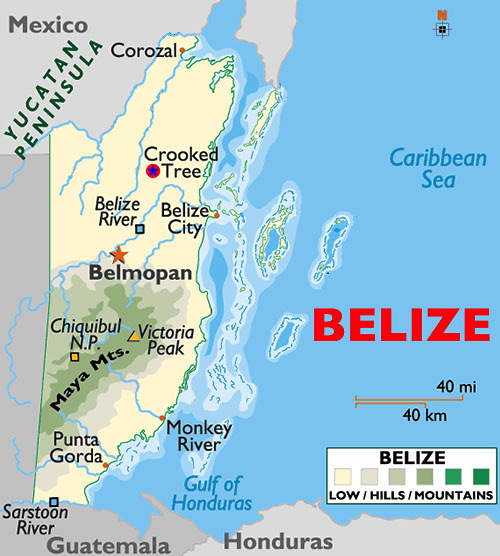
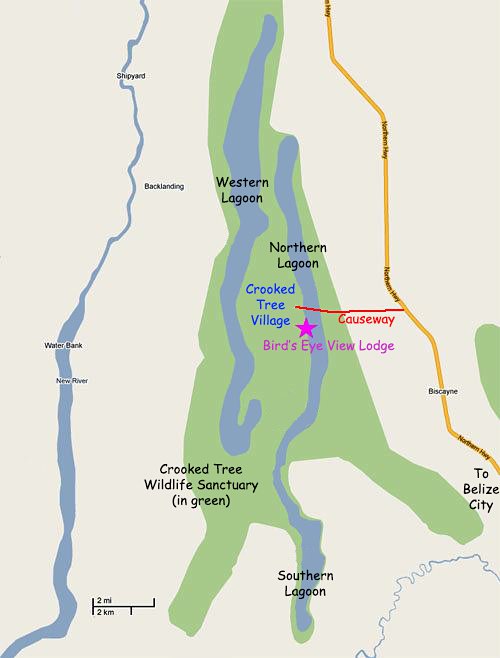
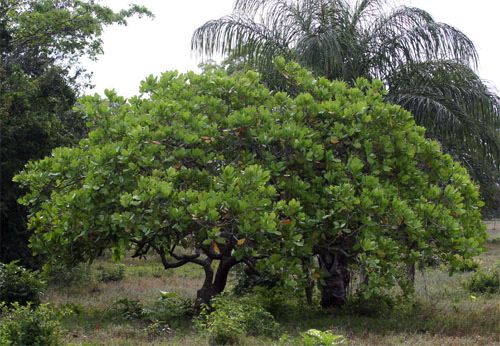

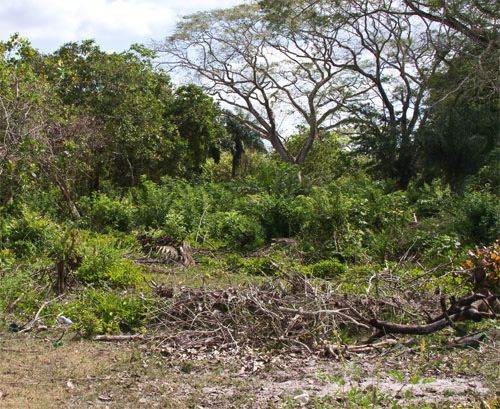
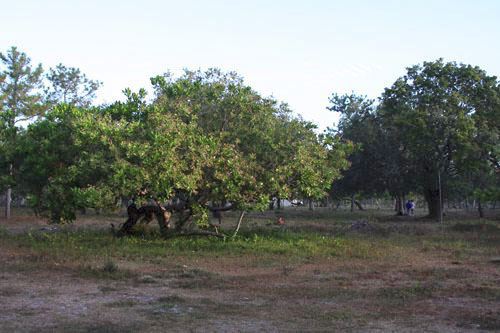
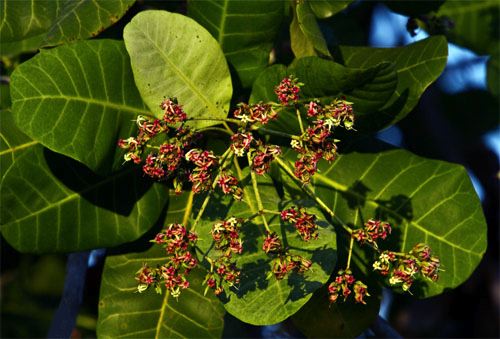
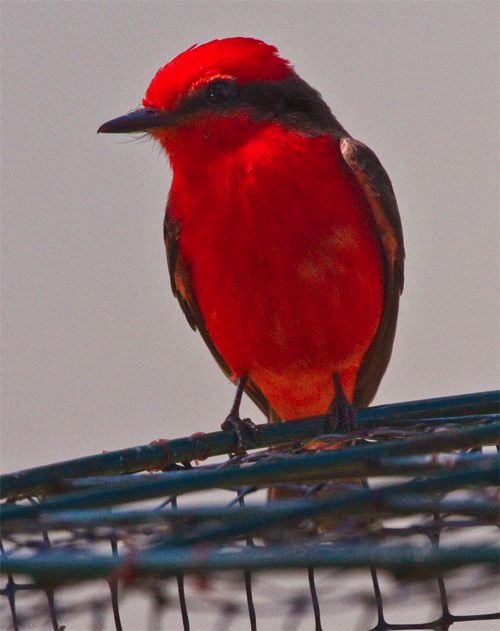
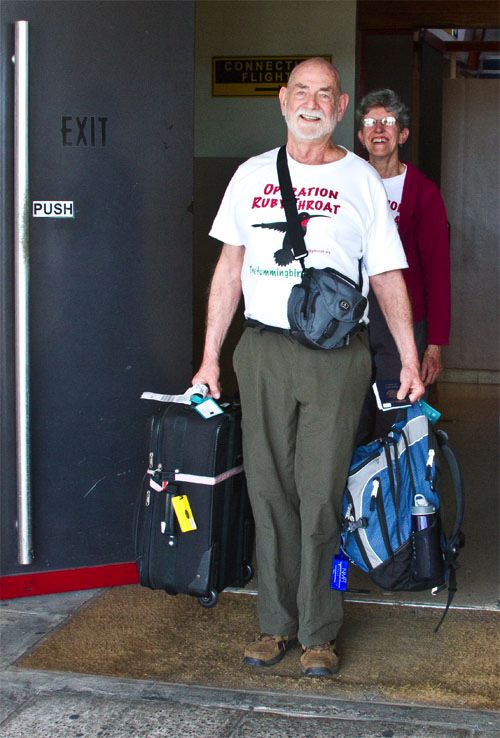

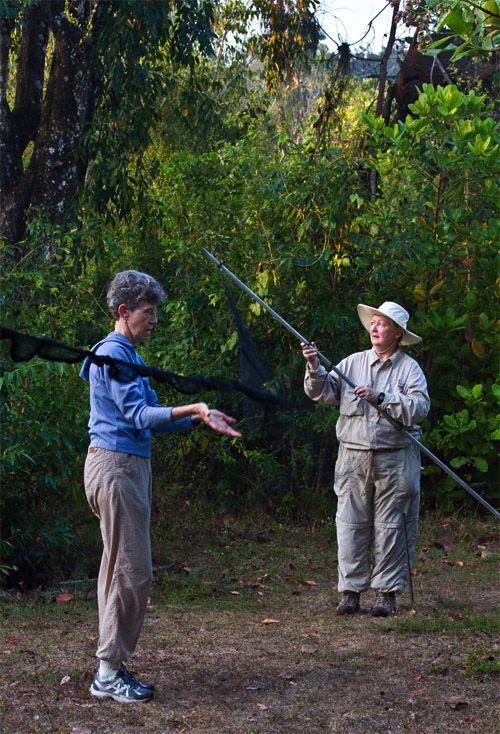

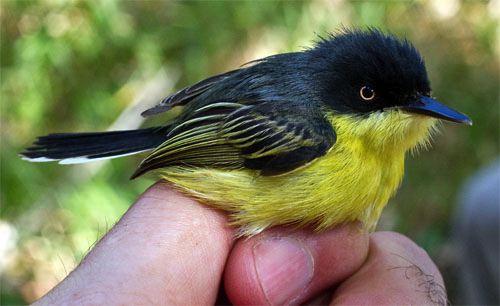
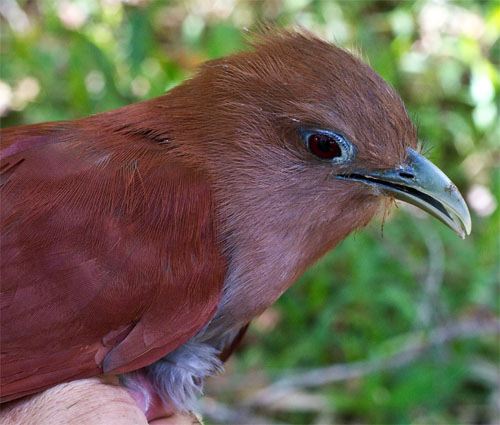
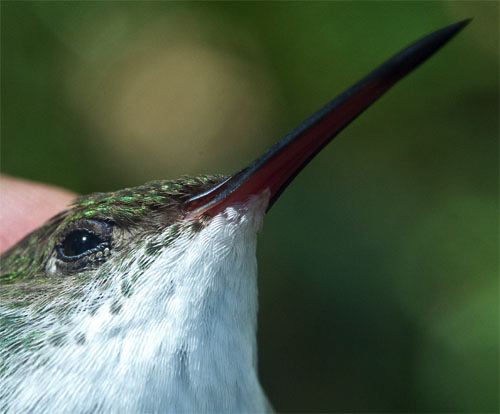
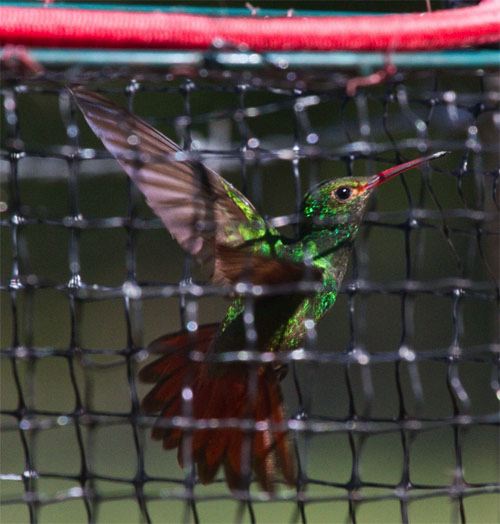
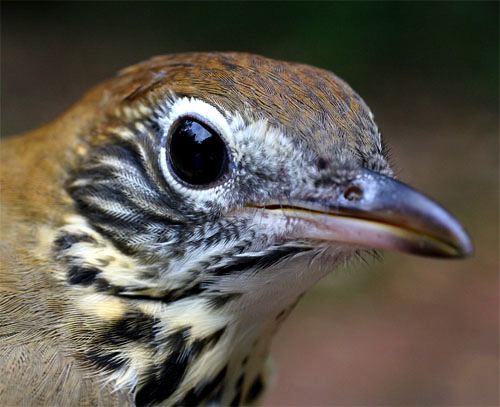
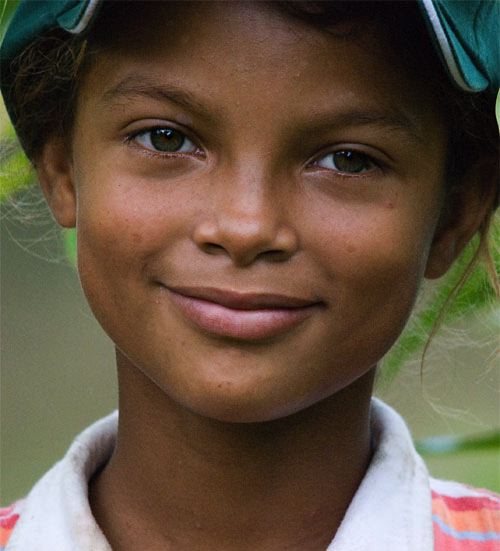
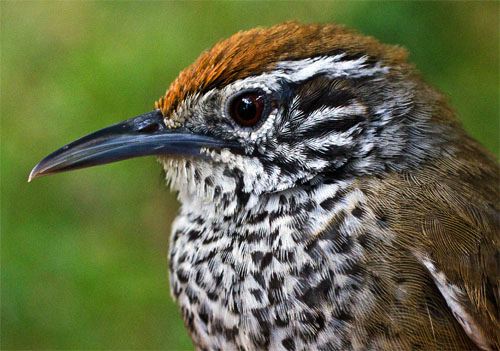
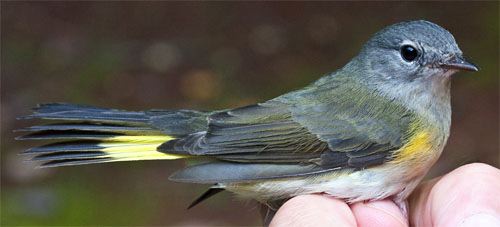
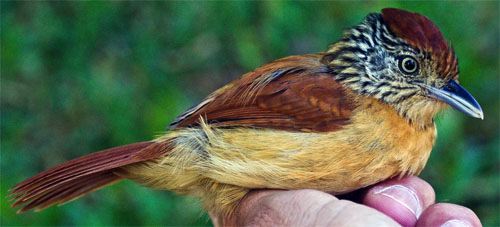
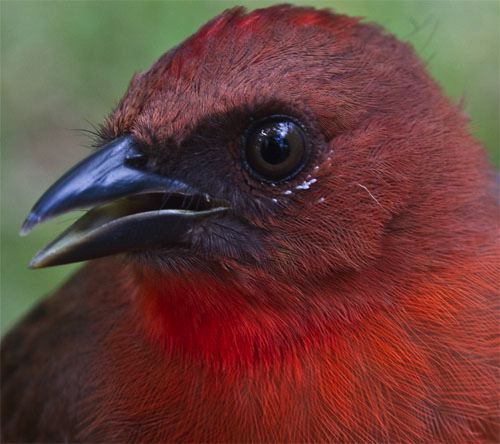


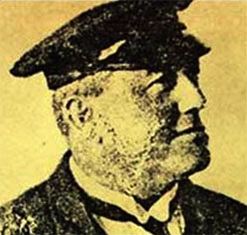 British-born Henry Edward Ernest Victor Bliss (born 1869, died 1926) was an engineer who made his fortune in oil speculation. After contracting polio at age 42, Bliss (at left) commissioned a large yacht and hired a crew to sail him around the world so he could fish in tropical waters. He eventually anchored at Belize harbor in what was then British Honduras and--although essentially confined to an on-board wheelchair--struck friendships with fishermen and other locals who passed near his boat at anchor. Bliss never set foot on Belizean soil but within a couple of months became so enamored of these good-natured people that he willed nearly $2 million to benefit the country's citizens. Interest from the endowment has been used wisely during the past eight decades to develop a museum, performing arts center, nursing school, medical facilities and libraries, and other programs for which the people still express sincere gratitude. Modern-day Belizeans seemed appreciative when we wished them "Happy Baron Bliss Day" all day on 7 March.
British-born Henry Edward Ernest Victor Bliss (born 1869, died 1926) was an engineer who made his fortune in oil speculation. After contracting polio at age 42, Bliss (at left) commissioned a large yacht and hired a crew to sail him around the world so he could fish in tropical waters. He eventually anchored at Belize harbor in what was then British Honduras and--although essentially confined to an on-board wheelchair--struck friendships with fishermen and other locals who passed near his boat at anchor. Bliss never set foot on Belizean soil but within a couple of months became so enamored of these good-natured people that he willed nearly $2 million to benefit the country's citizens. Interest from the endowment has been used wisely during the past eight decades to develop a museum, performing arts center, nursing school, medical facilities and libraries, and other programs for which the people still express sincere gratitude. Modern-day Belizeans seemed appreciative when we wished them "Happy Baron Bliss Day" all day on 7 March.


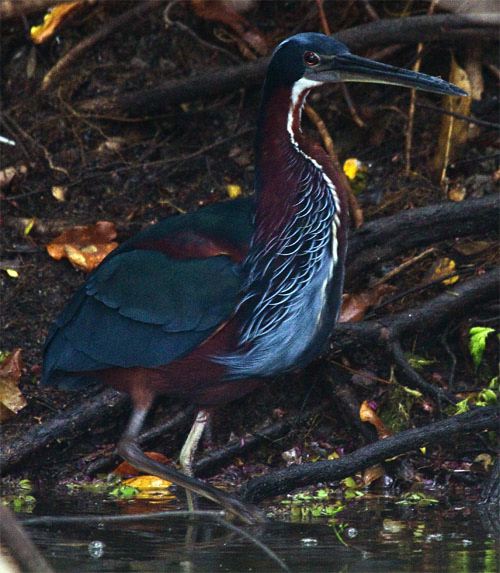
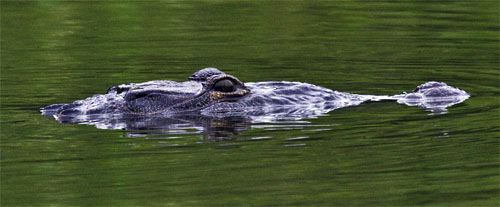
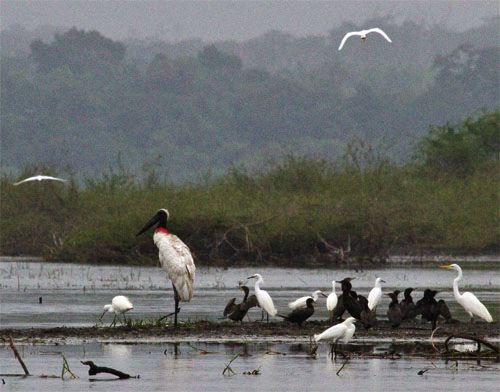
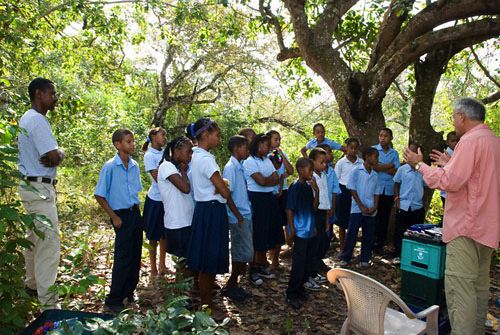
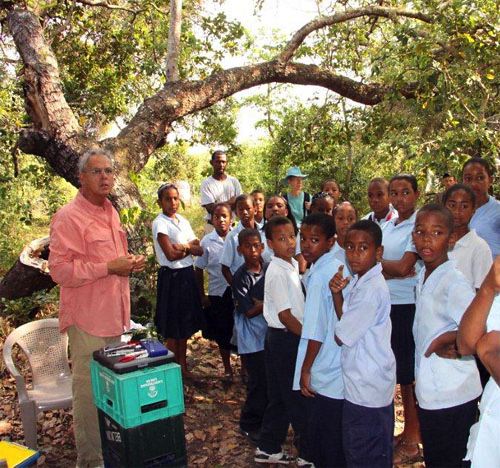
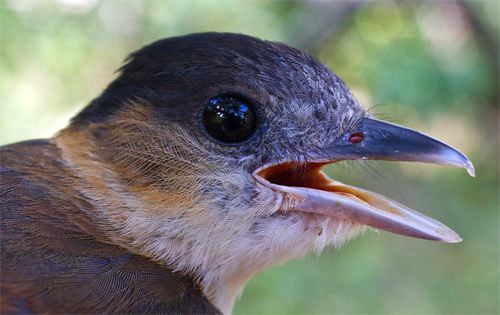
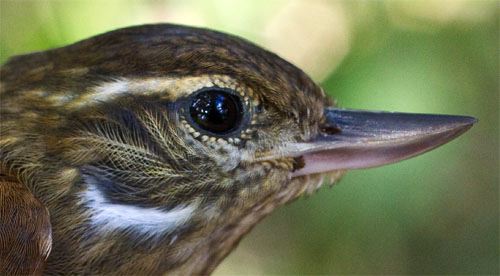
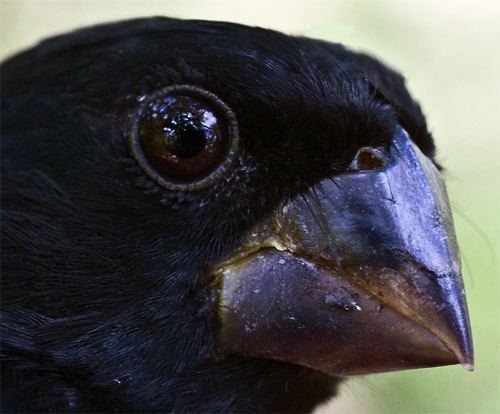
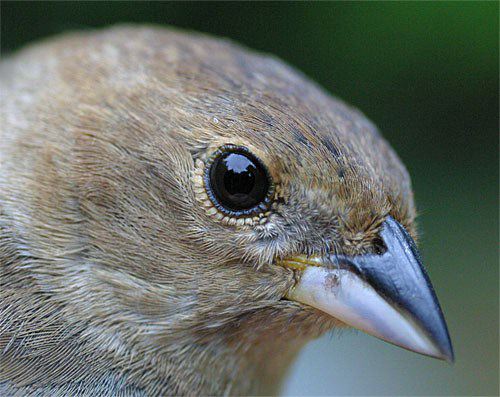

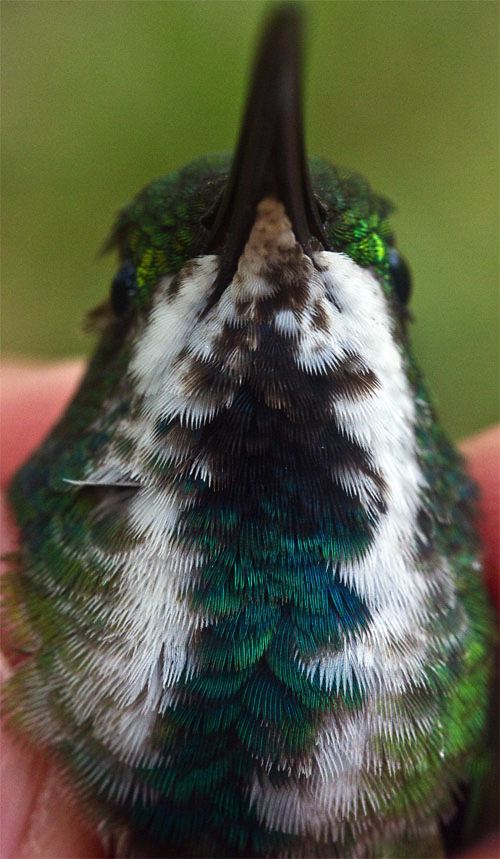
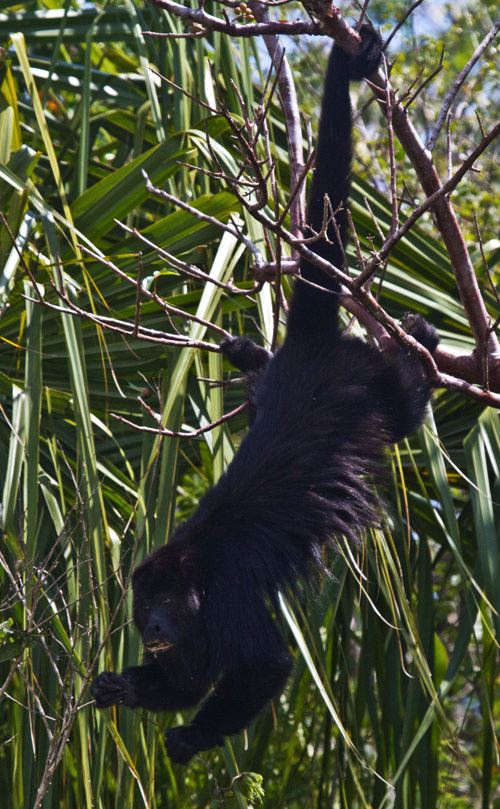
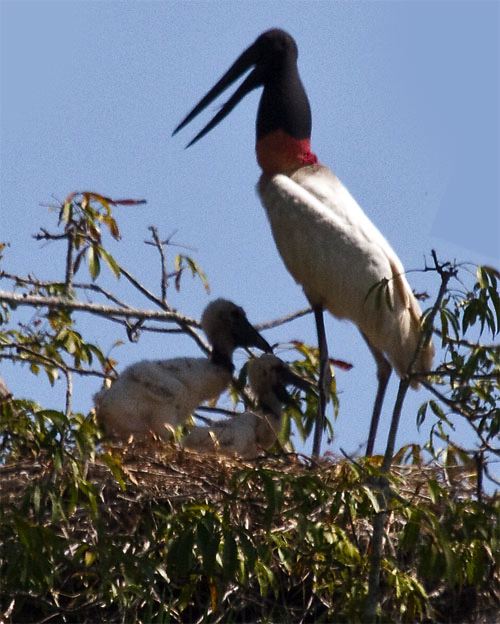
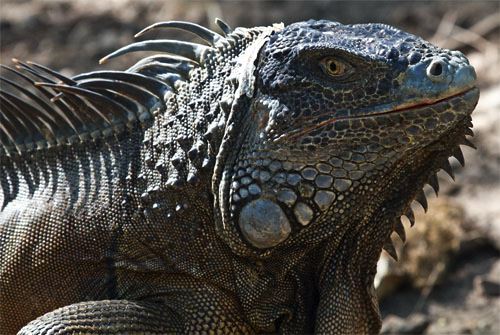
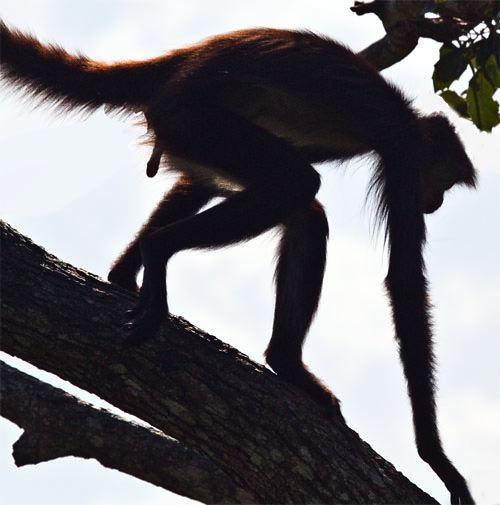
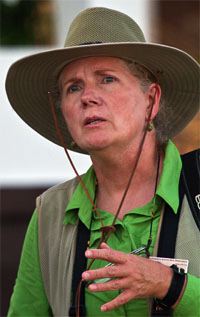 We returned from the zoo to the Lodge in time for supper as a significant cold front moved through the area, a change we hoped would bring new ruby-throats on the morrow. Because of rain and high winds we had to move our final evening meeting from the Lodge's open air rooftop patio to a covered area on the ground floor. There we were joined for a while by Sheri Williamson (right), author of the Peterson guide to Hummingbirds of North America. Sheri had arrived earlier that day in advance of a small group of birders who would tour Belize with her, and we were pleased she accepted our invitation to talk about her work with Southeastern Arizona Bird Observatory (SABO) at Bisbee. Following Sheri's comments and our presentation that summarized our 2011 work in Belize, the BeLevens went off to pack luggage and bed down for their final night in Crooked Tree.
We returned from the zoo to the Lodge in time for supper as a significant cold front moved through the area, a change we hoped would bring new ruby-throats on the morrow. Because of rain and high winds we had to move our final evening meeting from the Lodge's open air rooftop patio to a covered area on the ground floor. There we were joined for a while by Sheri Williamson (right), author of the Peterson guide to Hummingbirds of North America. Sheri had arrived earlier that day in advance of a small group of birders who would tour Belize with her, and we were pleased she accepted our invitation to talk about her work with Southeastern Arizona Bird Observatory (SABO) at Bisbee. Following Sheri's comments and our presentation that summarized our 2011 work in Belize, the BeLevens went off to pack luggage and bed down for their final night in Crooked Tree.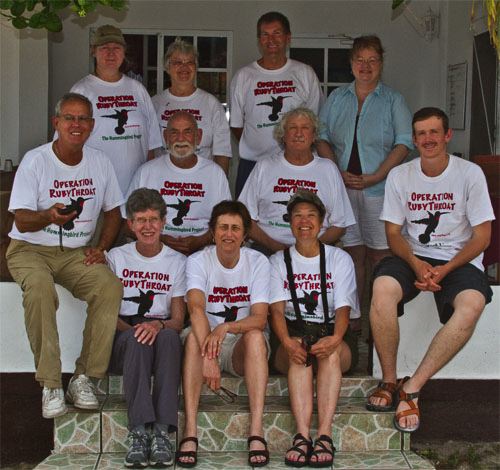
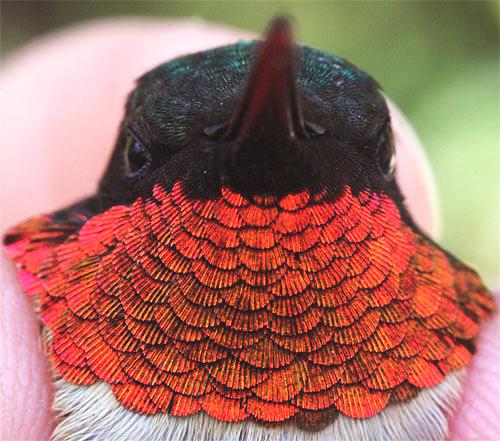
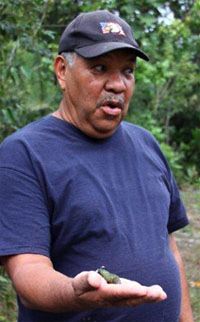 Following check-in it was ironic in the boarding area to run into Lee Jones, author of the Birds of Belize field guide we had found so useful in identifying local species with which we'd had little previous experience.
Following check-in it was ironic in the boarding area to run into Lee Jones, author of the Birds of Belize field guide we had found so useful in identifying local species with which we'd had little previous experience.

